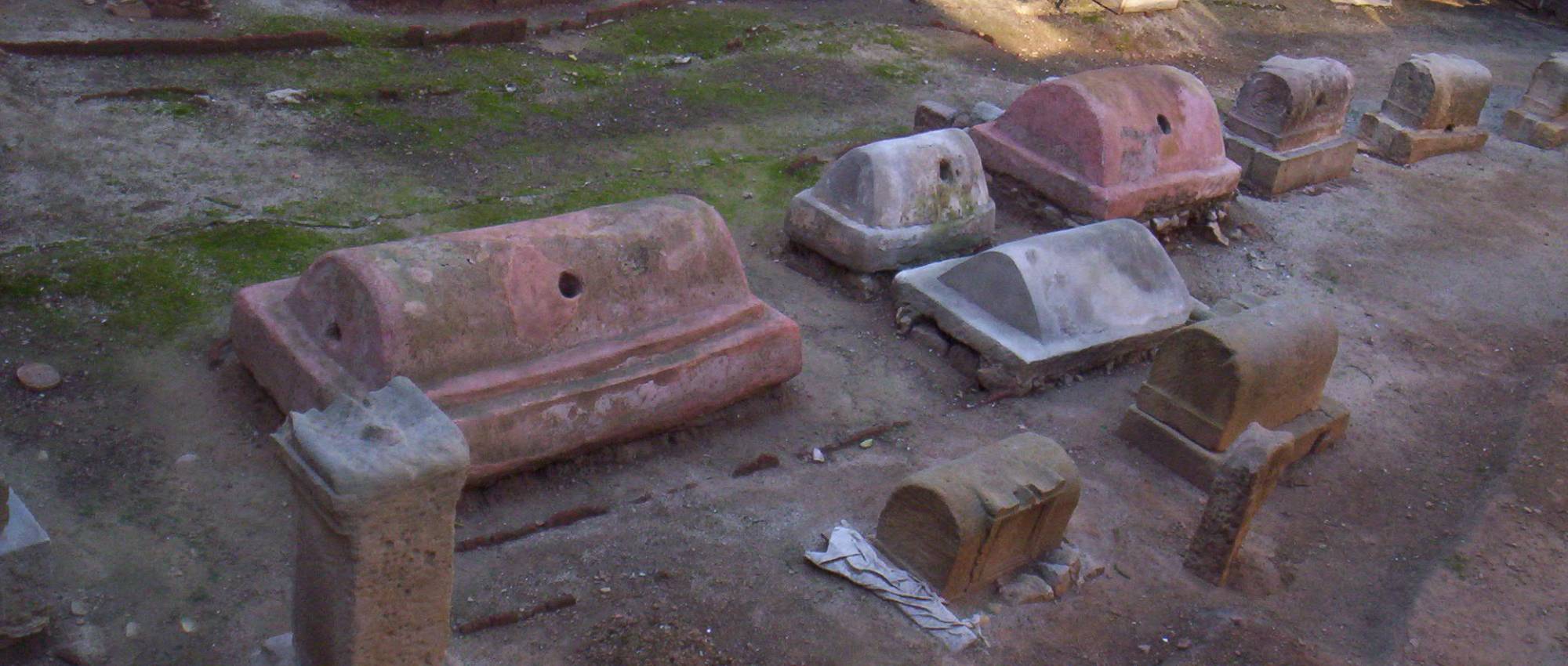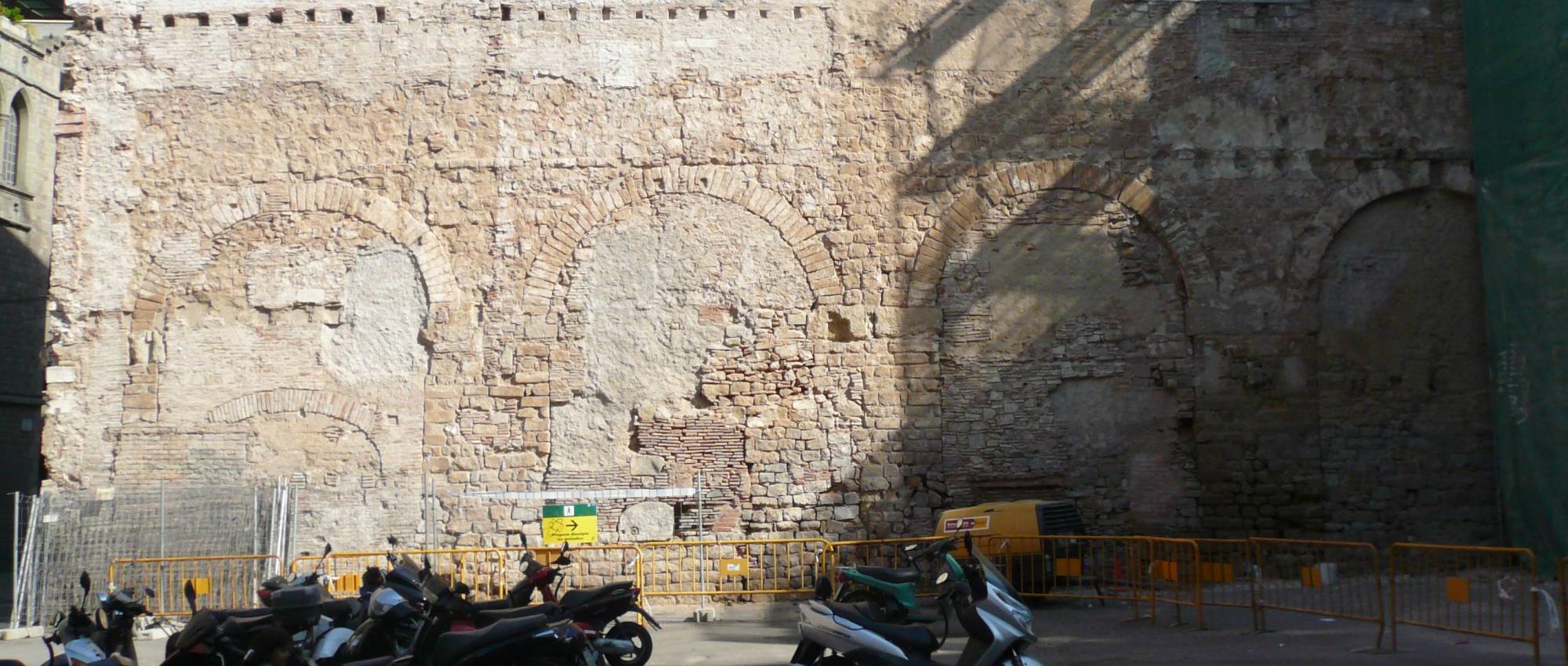Barcino The splendour of a Roman colony
 Photograph of the ancient Roman necropolis in Barcino. Àlex / Wikimedia Commons. CC BY-SA 2.5
Photograph of the ancient Roman necropolis in Barcino. Àlex / Wikimedia Commons. CC BY-SA 2.5
 Arcades of one of the aqueducts in Carrer de Duran i Bas. Pere Lòpez/ Wikimedia Commons. CC BY-SA 3.0
Arcades of one of the aqueducts in Carrer de Duran i Bas. Pere Lòpez/ Wikimedia Commons. CC BY-SA 3.0
"Iulia Augusta Faventia Paterna Barcino”. This inscription on a tombstone in the Museu d'Història de Barcelona (Barcelona City History Museum) shows the full name the Romans gave the city when they founded it in the years 15-13 BC during the time of the Emperor Augustus and which would become what is now Barcelona. For centuries it was an important colony of the Laietània, who went on to play a more important role in the final period of antiquity.
Although much of Roman city remains hidden, numerous archaeological excavations continue to provide information about what life was like in Barcino. Nowadays, the various remains can been seen in museums.
A significant part of the colony is visible in the archaeological subsoil of the Museu d'Història de Barcelona, where evidence of its monuments and the everyday life of its inhabitants have also been preserved. It is complemented by the Domus Avinyó and Domus Sant Honorat, residential houses that belonged to important personages of Barcino.
In the central area of the Forum there was an imposing temple dedicated to Augustus, of which three columns are preserved in situ within the premises of the Centre Excursionista de Catalunya. Not very far away, in the current Pati Llimona, we find the monumental remains of the Porta de Mar (Door of the Sea) and the baths that were located on the outside of the maritime entrance.
Also significant are the necropolis such as that on the Plaça de la Vila de Madrid, which displays 85 funeral items, and the Drassanes Reials, where a mausoleum has been preserved. Both are found next to the roads that left Barcino.
Other remains of Roman Barcelona that can be seen are the fragments of the wall (both the original from the 1st century BC and those built over them in the 3rd century AD), some defensive towers, the remains of the cemetery that was used as a sewer and which surrounded the perimeter of the wall and some arches and arcades from one of the two aqueducts that supplied water to the city.
Outside the walls, Barcino had an extensive ager (farmlands) where various villas have been identified.
Plan your visit
What can I do?
In addition to the items of the Roman city which are in museums, you can find sections of the wall in various commercial establishments in the Gothic Quarter of Barcelona.
More information
Heritage stories
Salve Barcino!
We retrace of the first city wall and the remains that can still be seen.